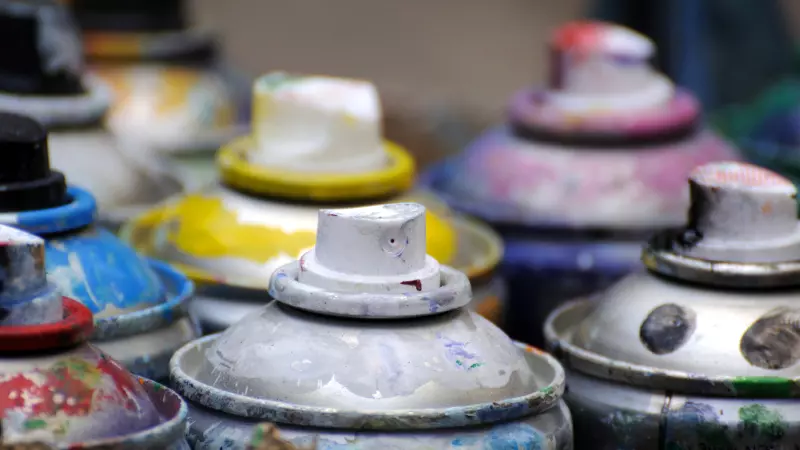How To Remove Spray Paint From Leather
If you work in industrial environments and commonly use or are exposed to spray paints, chances are that you’ll be wearing protective gear. This is to prevent your skin from coming into direct contact with the paint. Based on feedback we received, the leather gear that most commonly gets exposed to spray paint are leather boots as well as leather gloves.
If your protective gear is made of leather and you have unwanted spray paint stains that you want to remove, look no further as this guide will walk you through safe ways you can do so without further damaging your leather gear.
Not only do you want to remove spray paint stains from your leather gear to keep its pristine and clean look as much as possible, non-treatment can lead to long term damage to your protective leather gear.
A common ingredient found in spray paint is Acetone. As we had referenced in a separate article, acetone can be highly damaging to leather and we want to minimize its contact and exposure to your leather gear as much as possible.
The following steps detailed will set you on the right path to removing spray paint stains from your leather:
- Absorb Wet Spray Paint From Leather
- Scrape Off Dry Spray Paint As Much As Possible
- Rinse Stain With Gentle Washing Solution
- Use Rubbing Alcohol For Stubborn Spray Paint Stains
- Clean Leather
- Condition Leather
As with most stains, you want to ensure to treat them as fast as possible as the difficulty factor increases with time. However, as with all leather articles, you’ll need to do this correctly and carefully.
1. Absorb As Much Wet Spray Paint As Possible
Assuming that you are able to treat the spray paint stain before it fully dries, you want to ensure that you reduce the volume of paint that will be remaining on your leather boots or leather gloves.
Use a dry, absorbent cloth to gently dab on the spray paint stain. Repeat dabs with parts of the cloth that are still dry and untainted with the spray. During this process, it is essential to not wipe the stain as you want to minimize the surface area of your leather gear that is exposed to the spray paint stain.
Ensure that you only use dry and clean parts of cloth. If your cloth is wet or already has spray paint stains on it, chances of spreading the paint on your leather gear is increased.
2. Scrape Off As Much Dry Spray Paint As Possible
Using a blunt instrument, try and remove as much spray paint from your leather surface as possible. If you were not able to treat your spray paint stain whilst still wet, chances are the stain you are trying to treat is relatively thick.
An example of a blunt instrument that we recommend is a plastic knife. Take care to not use too sharp of an instrument or to apply too much force at this step, you want to ensure that you do not cut into or damage your leather gear directly.
3. Rinse Stain With Gentle Ingredients
Now that you’re working with spray paint that has dried, you want to attempt to remove as much of the paint with gentle methods and products. Using a stiff haired brush, apply a moderate amount of leather cleaning solution to the affected area and use medium force to brush over the affected area.
For a quick fix, we recommend the Amodex Ink and Stain Remover, as it works great for removing spray paint on leather. We’ve also done an extensive Amodex Ink and Stain Remover Review, if you would like to understand more of its benefits.
While most paint and stain removers for leather may be mild, you should still take care to ensure that you are not spreading the paint stain past the affected area. Even if seemingly dry, you might be spreading discoloration if you were to be too liberal with your brushing motion.
You’re also able to use household ingredients. These may be more convenient to use, as they’re commonly found in households. You can consider using some of the ingredients below, instead of a leather stain and paint remover.
- Olive oil
- Vegetable oil
- Cooking spray
If your spray paint is water based, chances are you would be able to remove most if not all of the paint stain at this step. Unfortunately, most spray paints are oil based paints, making the removal process that much more difficult.
If you are dealing with an oil based paint stain, then it’s best to use a leather stain and paint remover. If that doesn’t yield the results you’re looking for, then proceed to the next step as you are likely dealing with noticeable paint residue on the back of this step.
4. Use Rubbing Alcohol To Remove Remaining Spray Paint Stains
We definitely do not recommend that you start your treatment process at this step. Removing as much spray paint as we can prior to this will allow you to use as little rubbing alcohol as possible.
As rubbing alcohol is a harsher than usual chemical, over and elongated exposure to leather can also cause long term damage. We therefore recommend that you use the least amount of rubbing alcohol possible to remove the remnant stains that you are trying to treat.
Pour a conservative amount of rubbing alcohol onto a new, clean dry cloth and gently rub it over the stained area. Rubbing alcohol can be effective in dissolving the spray paint stain, have a second clean dry cloth on standby to dab out the spray paint that dissolves.
5. Clean Leather Gently
Once you have removed all traces of the spray paint stain, we recommend lightly and gently cleaning your entire leather article. This will ensure that even trace amounts of unwanted chemicals will not be a factor or present moving forward.
You can use a specialized leather cleaner for this purpose, such as the Leather Cleaner by Leather Honey. It’s one of our favorite leather cleaning products, because it’s gentle and made of natural ingredients.
If you do not have access to an off the shelf product, you can consider using a solution of 30% white vinegar and 70% water. If you do go this route, ensure that you are wiping your leather article dry on the back of the cleaning process.
6. Condition Your Leather
Regardless of whether you had used rubbing alcohol or not, we highly recommend this step largely because of the fact that acetone is a common ingredient used in spray paints.
Apply a generous amount of leather conditioner evenly over your leather gear once it is fully treated and clean. This can help counteract the negative impact caused by exposure to acetone, rubbing alcohol and even water.
Generally speaking, it’s also a good idea to condition or even waterproof your leather gear when working with spray paints. This is because leather conditioners and waterproofing agents add a protective layer, making it much easier to remove any spray paint stains in the future.

About Matthew
Co-Founder, Editor-in-Chief & Writer At Leatherskill
I’m a leather enthusiast turned artisan. Apart from crafting leather products, I’m passionate about writing in-depth guides and reviews on all things leather!

